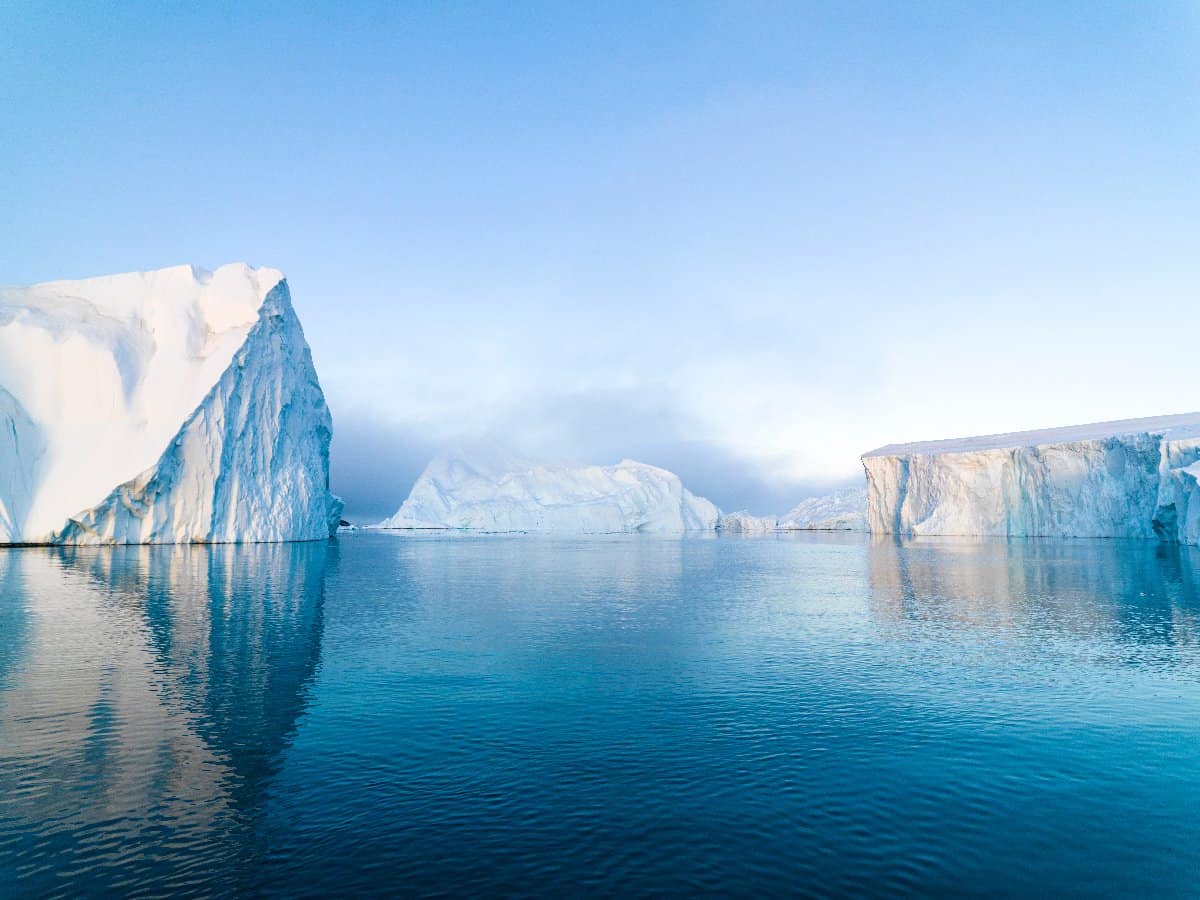The Arctic Ocean is a vast expanse of icy water situated in the North Pole. Its remote location and extreme weather conditions make it a subject of fascination for scientists, geographers, and explorers. As we continue to discover more about this cold, harsh world, here are some facts about the Arctic Ocean that will blow your mind!
1. It formed after the dinosaurs went extinct
The dinosaurs went extinct 65 million years ago, in the Cretaceous period. According to researchers, the Arctic Ocean came into existence during the Cenozoic Era. Its formation resulted from the gradual widening of the seafloor and the fragmentation of the landmass then known as the Arctic Continent. What sets this ocean apart is that it’s almost surrounded by land.
2. A place to witness the Northern Lights
The Northern Lights, also known as the Aurora Borealis, is one of the most breathtaking natural phenomena witnessed on our planet. They are caused by the collision of charged particles from the sun with the Earth’s atmosphere. When these solar particles, carried by solar winds, collide with oxygen and nitrogen atoms in our atmosphere, they produce a luminous glow in the sky. However, the Earth’s magnetic field directs these particles towards the polar regions, so the only two places you can see this phenomenon are the Arctic and the Antarctic!
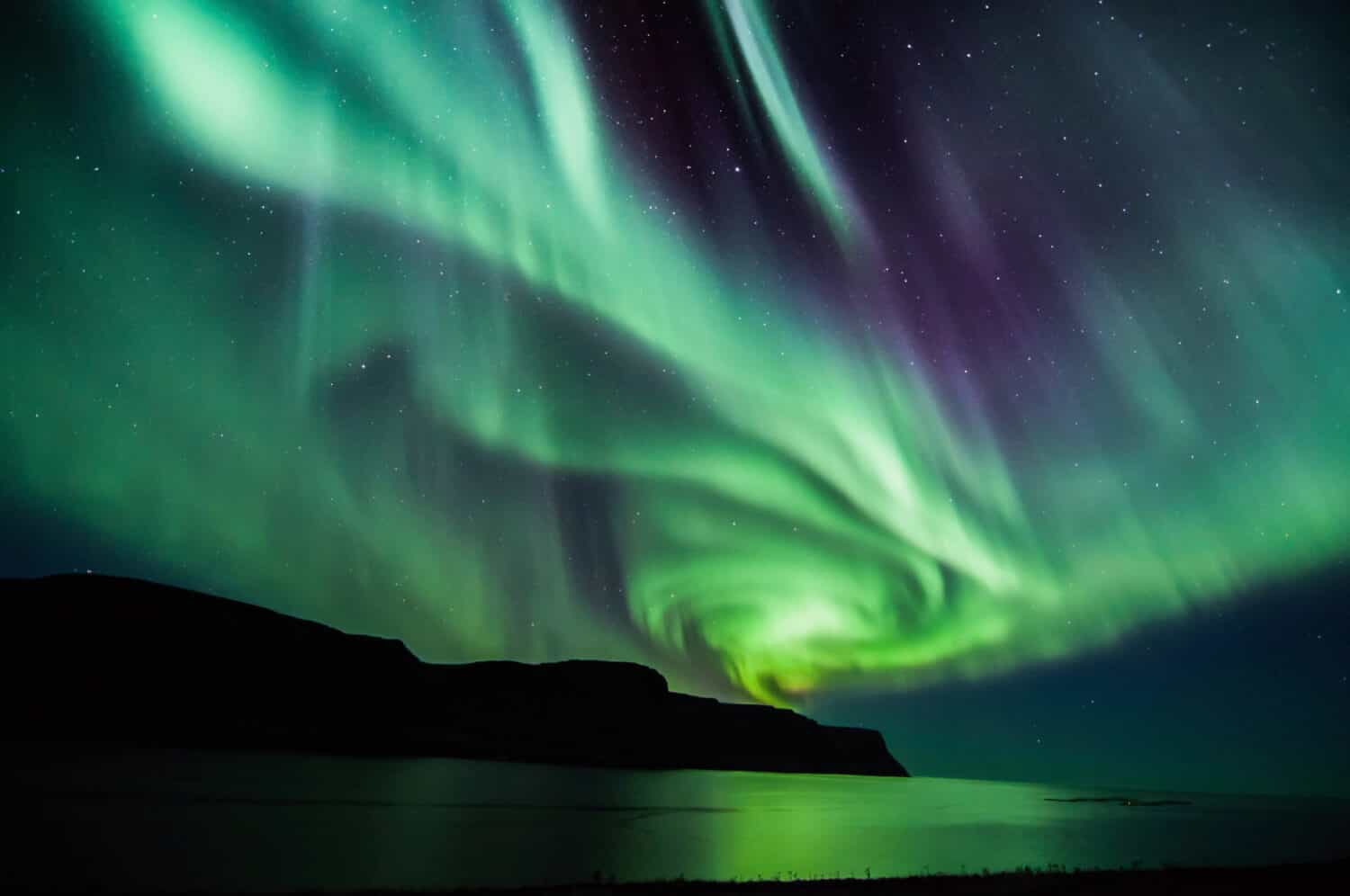
An Aurora Borealis Spiral in Iceland.
©Mike-Hubert.com/Shutterstock.com
3. It is the smallest and shallowest ocean
Despite its vastness, the Arctic Ocean is the smallest and shallowest of the world’s five major oceans. It’s around 1.4 times as big as the United States, but only a fraction of the depth of the Pacific Ocean. The average depth of the Arctic Ocean is 3,953 feet however the deepest parts (5,441 meters; 17,850 feet), known as the Litke Deep, are particularly isolated and unexplored because of year-round ice cover.
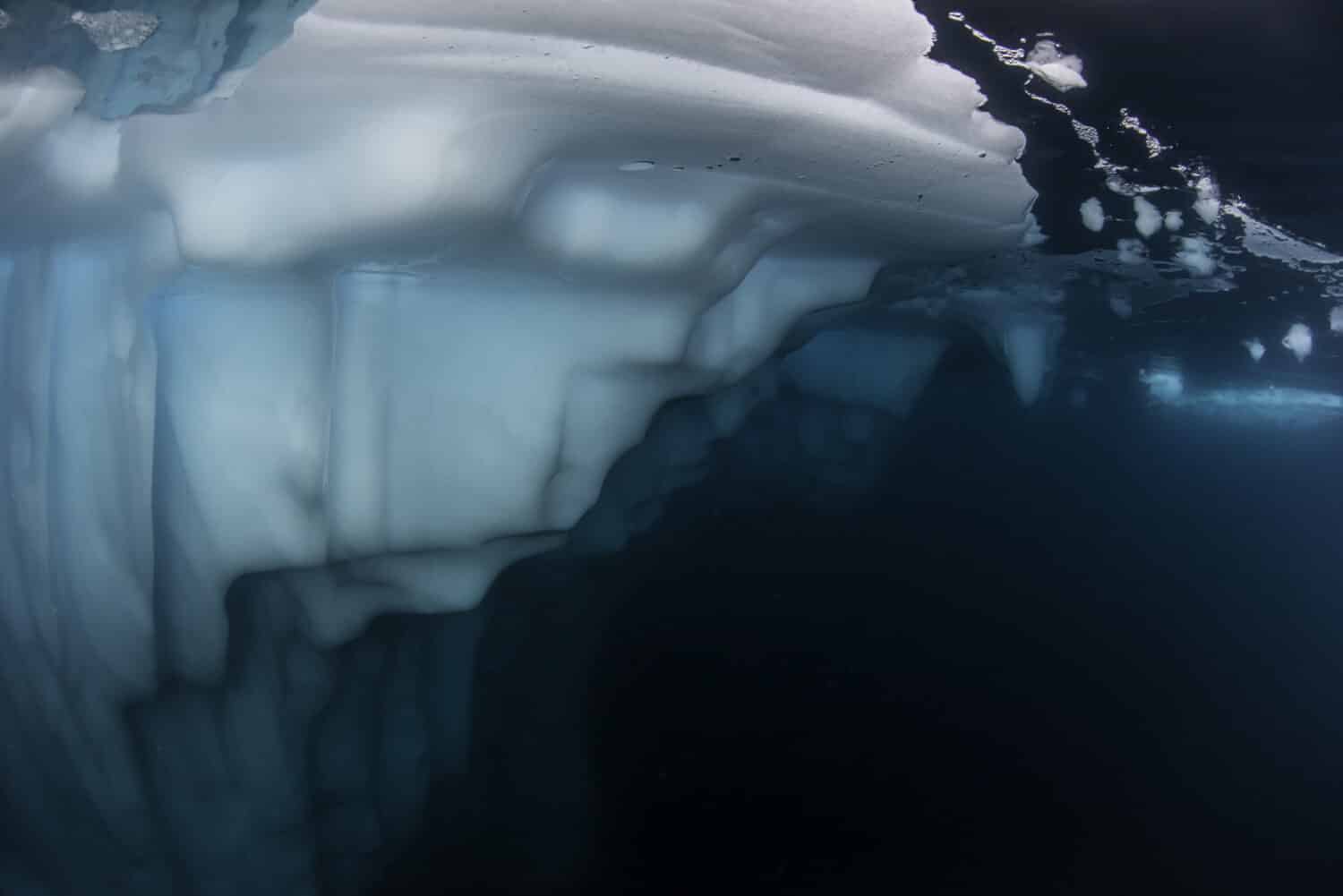
An iceberg submerged underwater.
©wildestanimal/Shutterstock.com
4. It experiences a Polar Climate
Due to its location at the top of the Earth, the Arctic Ocean experiences a phenomenon called the Midnight Sun, where the sun remains above the horizon for an extended period during the peak summer months. Thousands of tourists flock to the north in the summer to witness this event! But in winter, the region is submerged in darkness for months – this is called the Polar Night. There are three degrees to a polar night:
- Twilight Polar Night: While the sun remains below the horizon, there is still some residual light. This form of polar night is more of a civil twilight than complete darkness.
- Nautical Polar Night: This is a period of greater darkness when the sun is between 6 and 12 degrees below the horizon.
- Astronomical Polar Night: This is the most intense form of polar night, with the sun more than 18 degrees below the horizon. The sky is as dark as it can get.
For humans living in these regions, the extended darkness can be challenging. Residents often rely on artificial lighting, and some may experience conditions like Seasonal Affective Disorder (SAD) due to the lack of natural sunlight.

The Midnight Sun!
©Kertu/Shutterstock.com
5. The only place in the world to find polar bears
Even though Antarctica is similar in cold weather and icy oceans, the Arctic is the natural home for polar bears. They are one of Earth’s largest land predators. Because they predominantly eat meat, scientists classify them as hyper-carnivores. Equipped with dense fur and a thick layer of fat, they can withstand extremely cold temperatures both on land and in the water. Their habitat stretches across the Arctic Ocean and includes regions like Alaska, Canada, some parts of Russia, Norway, and Greenland.
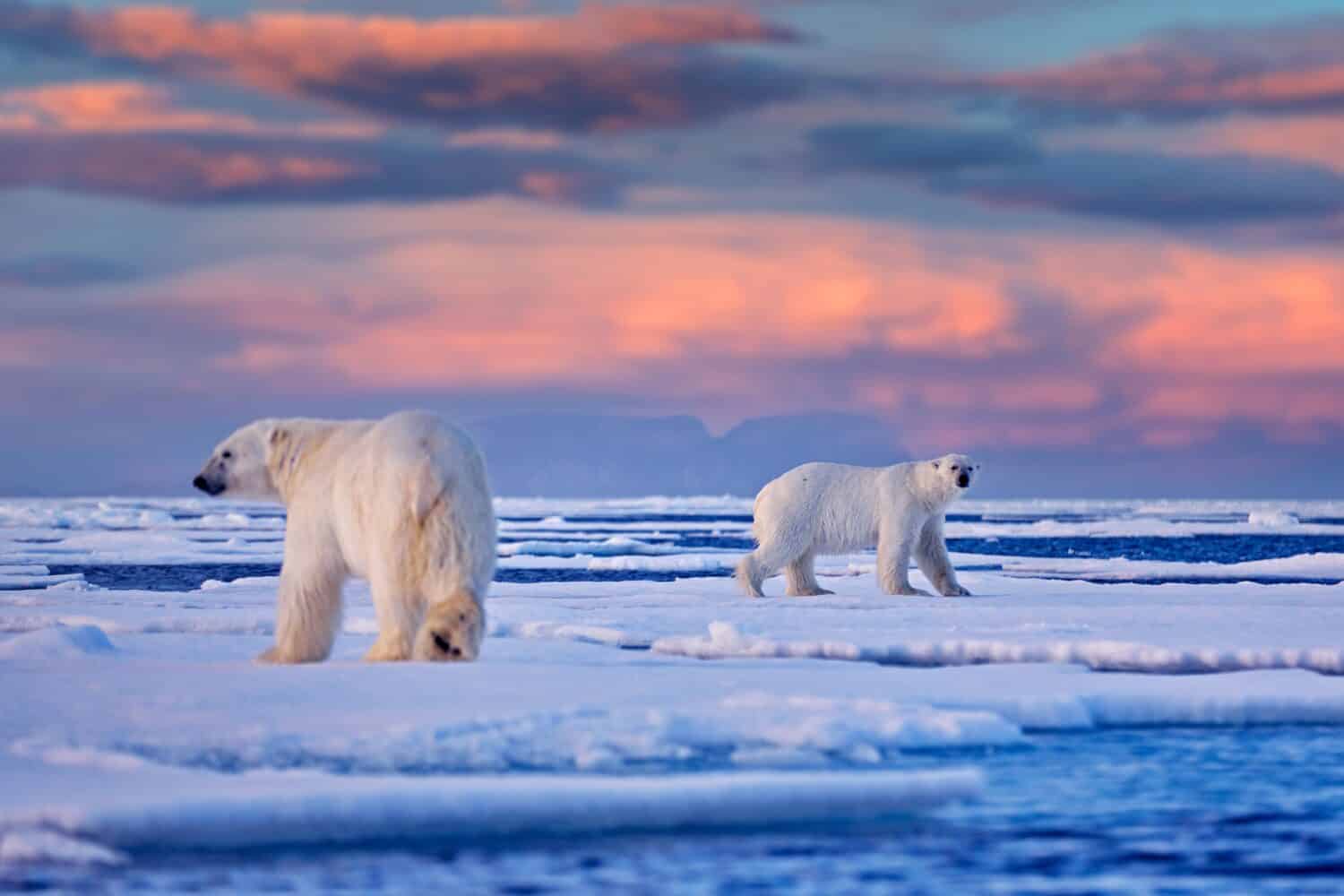
Adult Polar Bears roaming over the ice.
©Ondrej Prosicky/Shutterstock.com
6. It has underwater mountain ranges
Beneath the icy surface of the Arctic Ocean lies the Lomonosov Ridge, an underwater mountain range that stretches over 1,800 miles. Russia, Canada, and Denmark (via Greenland) have all made territorial claims on parts of this ridge, due to its potential mineral and energy resources, particularly oil and gas. However, the inaccessibility and remoteness of the Arctic Ocean make extensive scientific exploration of the Lomonosov Ridge challenging. Recent decades have seen numerous scientific expeditions to study the ridge’s geology, map its features, and gather data to support territorial claims.

A map of the Lomonosov Ridge.
©Bennian/Shutterstock.com
7. The Underwater Waterfall
Yes, there’s a waterfall submerged in the ocean! The Denmark Strait cataract, found between Greenland and Iceland, is an underwater waterfall. It’s the world’s largest waterfall by volume. It isn’t a “waterfall” in the traditional sense where water flows off a cliff. Instead, it refers to a significant vertical flow of water masses due to differences in temperature and salinity. Essentially, colder, saltier water from the Arctic water flows beneath warmer, fresher water of the Irminger Sea. This creates a “waterfall” effect under the ocean’s surface and is many times the size of any on land.
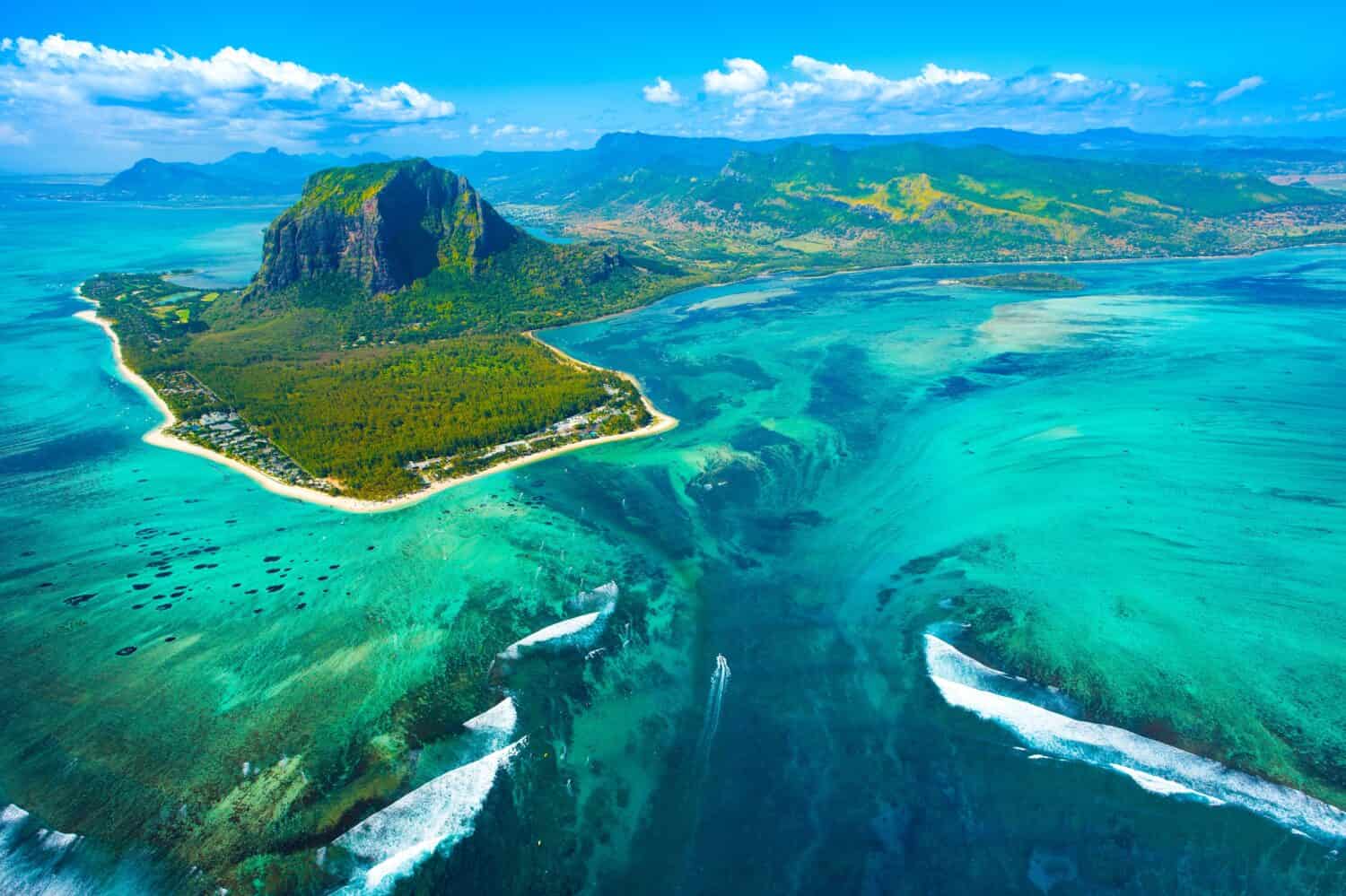
The Underwater Waterfall!
©Myroslava Bozhko/Shutterstock.com
8. It is rich in biodiversity
You would think that life may not necessarily thrive in such a cold climate. But despite its harsh environment, the Arctic Ocean teems with life! From microscopic phytoplankton to majestic mammals like polar bears and narwhals, the Arctic has a surprisingly rich ecosystem. The cold waters also hold giant corals, sponges, and a plethora of fish species.
The Arctic cod (Boreogadus saida) is one of the most common and ecologically important fish species in the Arctic Ocean. This small fish plays a pivotal role in the Arctic marine food web. Specially adapted to the cold waters of the Arctic, it primarily feeds on zooplankton and, in turn, becomes a primary food source for various larger animals, including seabirds, seals, whales, and other larger fish. The Arctic cod’s prevalence and its position in the food chain make it a keystone species in the Arctic marine ecosystem. Its distribution and abundance directly influence the health and sustainability of many Arctic predators.
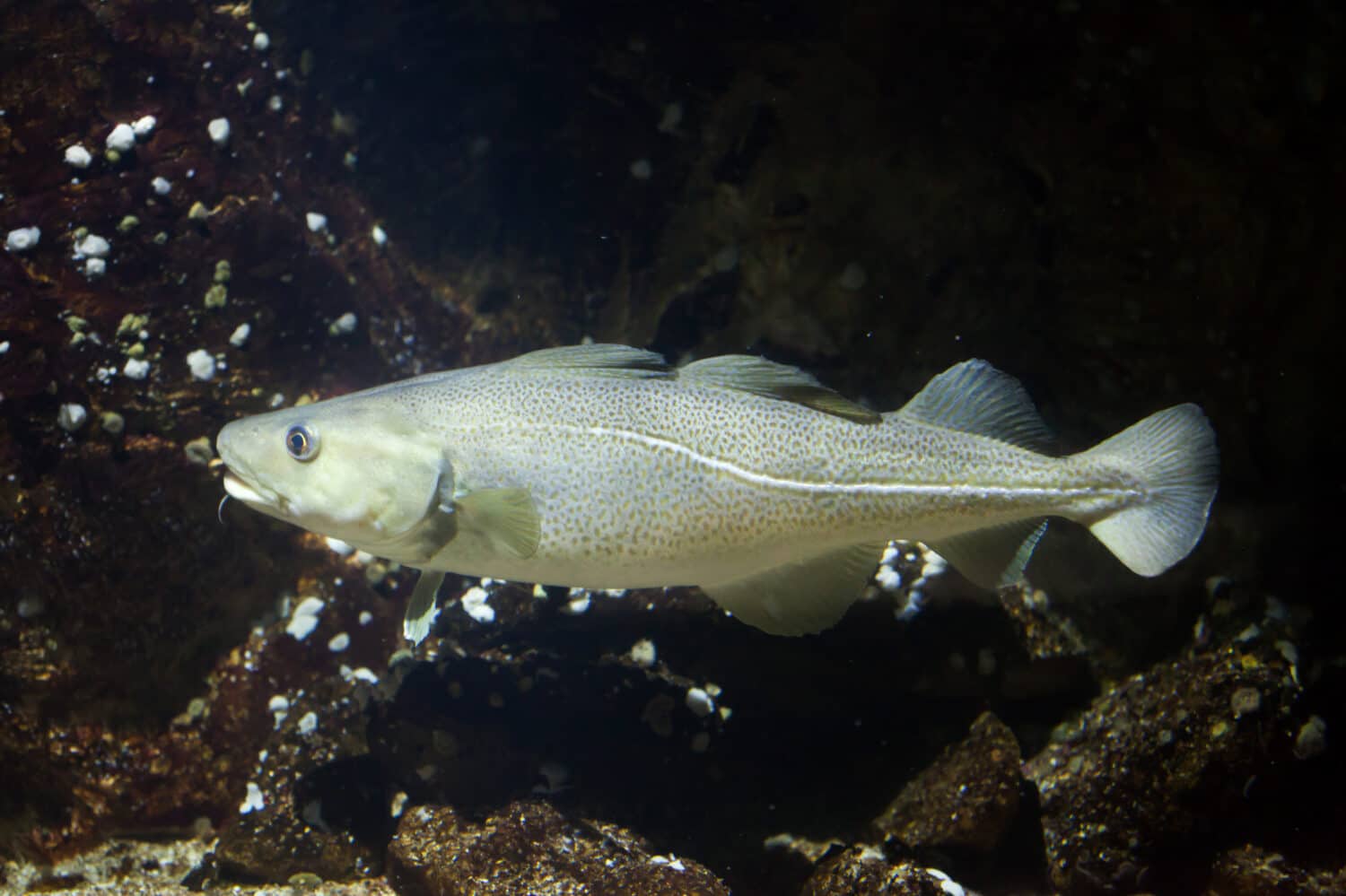
The Arctic Cod.
©Vladimir Wrangel/Shutterstock.com
9. Climate Change hot spot
The Earth’s ecosystems are extremely fragile. Scientists are recording that the Arctic (which holds 10% of the Earth’s freshwater) is warming at almost twice the rate of the rest of the planet. As a result, the region is experiencing dramatic changes. Sea ice is melting, permafrost is thawing, and this is affecting global weather patterns and sea levels.
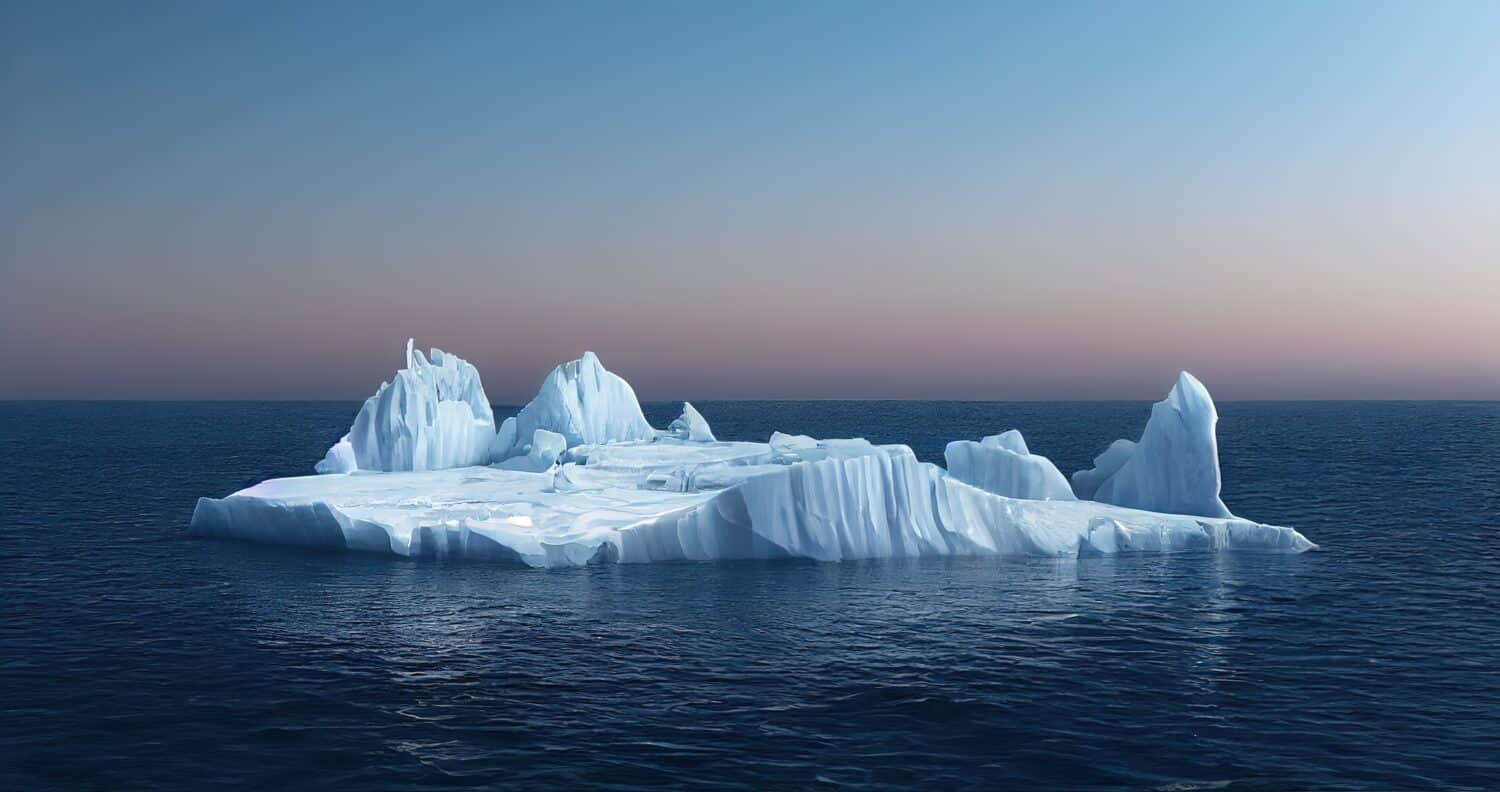
Melting ice caps in the middle of the Arctic.
©Zaleman/Shutterstock.com
10. A repository of ancient microbes
As the Arctic ice melts, ancient microbes – some of which have been dormant for thousands or even millions of years – are being released. Scientists are keenly interested in studying these to understand past climates and the evolution of life. However, it’s important to be careful with discoveries of dormant microbes as they can be disease-carrying.

Microscopic image of blue microbes.
©cones/Shutterstock.com
11. The Arctic’s own ocean current
Unlike the global conveyor belt ocean current, the Arctic has its own circulation system called the Beaufort Gyre. This enormous clockwise-swirling vortex of fresh water, bigger than all the Great Lakes combined, has the potential to influence global climate significantly if its current were to change direction or release its water. This is why it’s so important to keep arctic sea caps from melting because any change in the freshwater: seawater ratio can result in dramatic weather changes not just in the Arctic, but the entire world!
The Arctic Ocean, a wonder in its own right, is a testament to nature’s extremes. Life has grown and uniquely adapted to its harsh environment. From the midnight sun to the Northern Lights, the Arctic is a reminder of the raw and untouched beauty that still exists on our planet. While it may seem distant and removed from our daily lives, the interconnectedness of Earth’s systems means the Arctic’s health directly impacts global climate, sea levels, and biodiversity. As we continue to explore and learn about this ocean, we must also recognize the urgency of protecting its fragile beauty and balance.
Thank you for reading! Have some feedback for us? Contact the AZ Animals editorial team.

